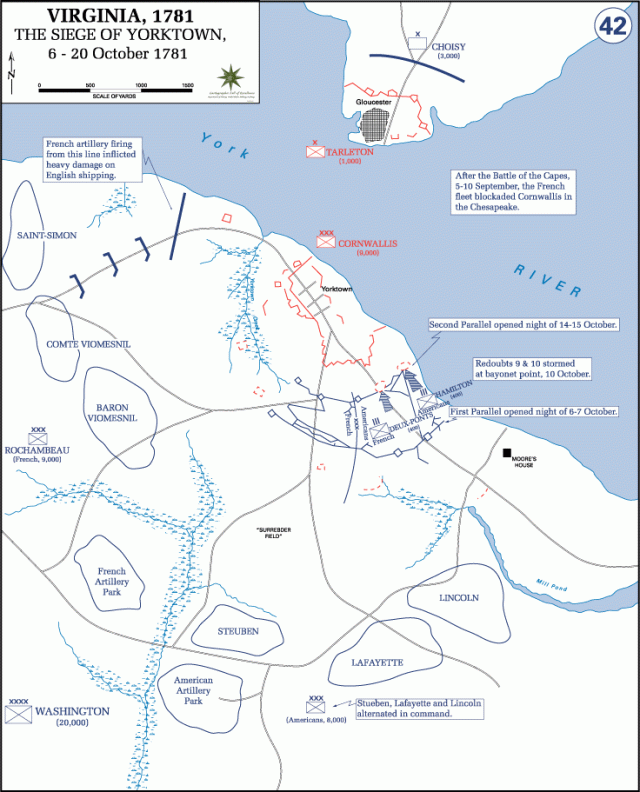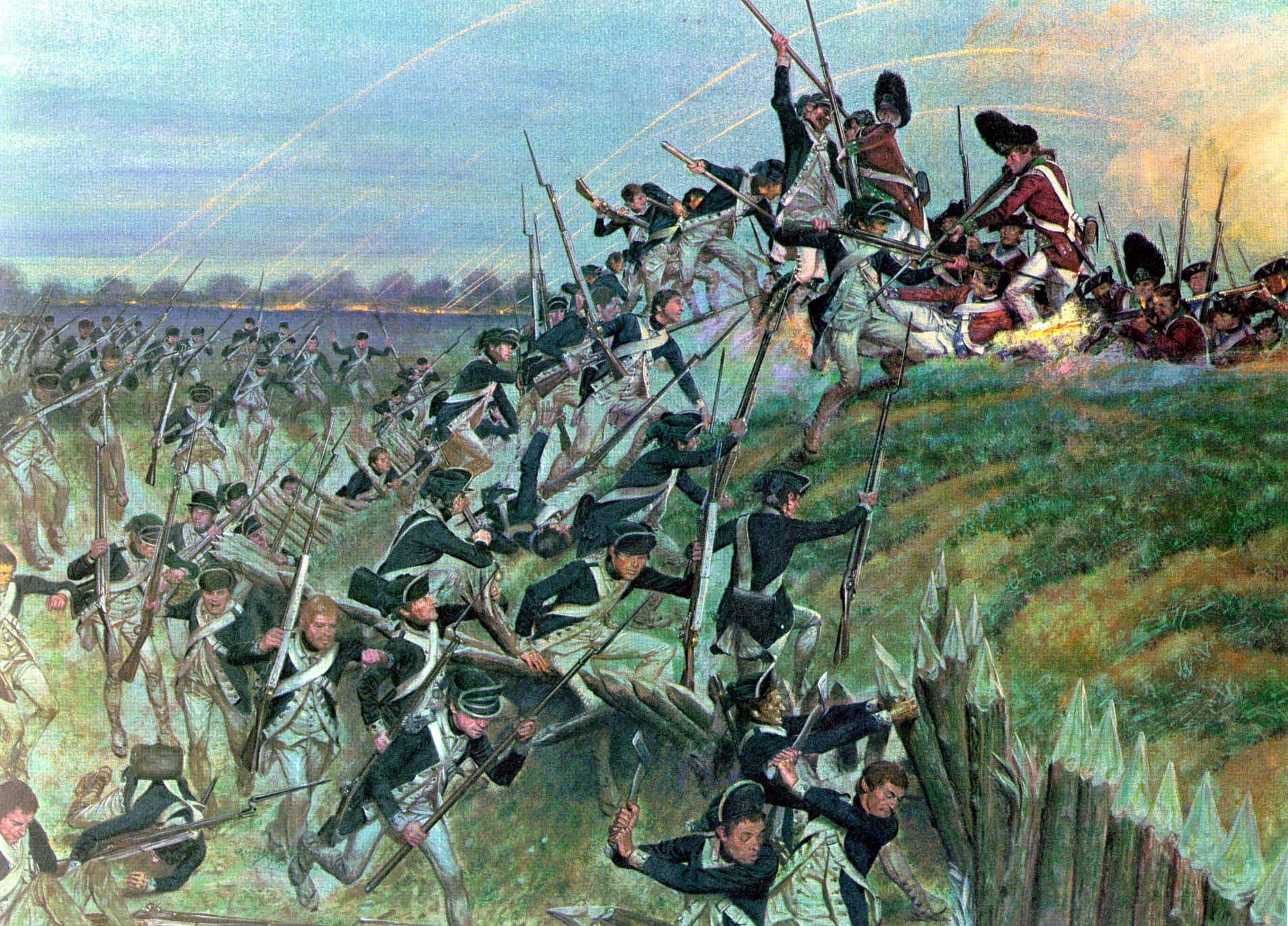The Fall of 1781 presented Continental Army General George Washington with an important opportunity Aca,!" that of trapping and defeating British General Lord Cornwallis at a small Virginia port town named Yorktown. Cornwallis had been ordered to take a post with his army and await the arrival of a Royal Navy fleet to extract him. Washington learned of this and left a Aca,!A"ghost armyAca,!A? outside New York to fool the British there while moving the bulk of his army south into Virginia. After WashingtonAca,!a,,cs army surrounded Yorktown on land, the entrapment of Cornwallis was complete when the Royal Navy fleet sent for him was defeated by a French fleet off of the Virginia Capes.
In conjunction with our French allies a formal siege began on September 28th, and a series of trench lines (parallels) were dug bringing them ever closer to the main British fortifications surrounding Yorktown. Sergeant Joseph Plumb Martin and his fellow soldiers of the Corps of Sappers and Miners helped to dig these trenches which enabled the bombardment of Yorktown to begin on October 9th. The British had erected a number of earthwork forts, called redoubts, in front of their main defenses, but as the siege progressed they only retained three. Of those, Redoubts 9 and 10 needed to be captured to permit the second siege parallel to be brought close to the British fortifications. That would allow the heavy artillery to knock them down - and force Cornwallis to surrender.
A plan was devised to assault both redoubts on the evening of October 14th - the French were to attack Redoubt 9 and the Americans would attack Redoubt 10. Recalls Martin: Aca,!A"The Sappers and Miners were furnished with axes and were to proceed in front and cut a passage for the troops through the abatis, which are composed of the tops of trees, the small branches cut off with a slanting stroke which renders them as sharp as spikesAca,!A|We had not lainAca,!A|long before the expected signal was givenAca,!A|by the three shells with their fiery trains mounting the air in quick succession. The word up, up, was then reiterated through the detachment. We immediately moved silently oA,A!n toward the redoubt we were to attack, with unloaded muskets. Just as we arrived at the abatis, the enemy discovered us and directly opened a sharp fire upon usAca,!A|As soon as the firing began, our people began to cry, Aca,!EoeThe fortAca,!a,,cs our own!Aca,!a,,c and it was Aca,!EoeRush on boys.Aca,!a,,c The Sappers and Miners soon cleared a passage for the infantry, who entered it rapidly. Our Miners were ordered not to enter the fort, but there was no stopping themAca,!A|I could not pass at the entrance we had made, it was so crowded. I therefore forced a passage at a place where I saw our [cannon] shot had cut away some of the abatisAca,!A|.Aca,!A? The fort was quickly captured and the two captured redoubts were immediately incorporated into the second siege parallel. Cannon batteries were then constructed to allow point blank fire against the British defenses.
On the morning of October 17, a British drummer mounted the parapet of their fortifications and beat a Aca,!A"parleyAca,!A?, and was joined by an officer waving a white handkerchief. With his fortifications heavily damaged, Cornwallis proposed to surrender. Emissaries from both sides met to work out the details, and two days later on October 19, 1781 the British troops marched out of Yorktown and laid down their arms to a tune titled Aca,!A"The World TurnAca,!a,,cd Upside DownAca,!A?. Martin noted that the soldiers appeared Aca,!A"all armed, with bayonets fixed, drums beating, and faces lengtheningAca,!A|[and that they] paid the Americans, seemingly, but little attention as they passed them, but they eyed the French with considerable malice depicted in their countenances.Aca,!A?
While the Revolutionary War would not officially end until nearly two years later, the last major engagement had been fought. Sergeant Joseph Plumb Martin and his fellow soldiers had indeed helped to turn the world upside down.
ABOUT THIS STORY: Many of the sources presented in this article are among 400,000 books, 1.7 million photos and 12.5 million manuscripts available for study through the U.S. Army Military History Institute (MHI). The artifacts shown are among nearly 50,000 items of the Army Heritage Museum (AHM) collections. MHI and AHM are part of the: Army Heritage and Education Center, 950 Soldiers Drive, Carlisle, PA, 17013-5021.
Related Links:
A Working Bibliography of MHI Sources: Noncommissioned Officers
A Working Bibliography of MHI Sources: Revolutionary War--Yorktown








Social Sharing